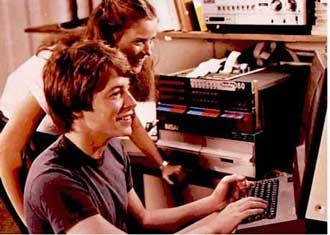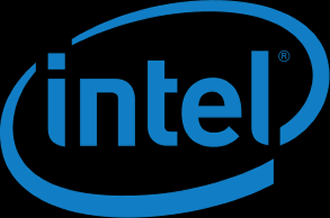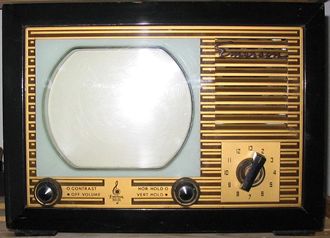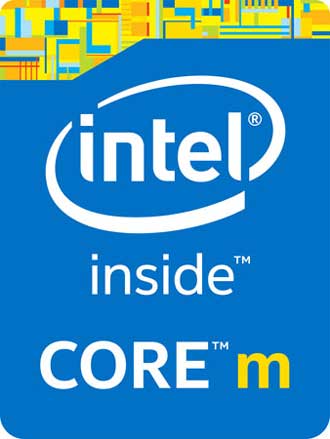 A number of official Gernan government sites have been hacked by a group that claims affinity with the Russian government’s moves in Ukraine.
A number of official Gernan government sites have been hacked by a group that claims affinity with the Russian government’s moves in Ukraine.
 A number of official Gernan government sites have been hacked by a group that claims affinity with the Russian government’s moves in Ukraine.
A number of official Gernan government sites have been hacked by a group that claims affinity with the Russian government’s moves in Ukraine.
 Manufacturers of X86 based servers are taking market share from intermediary companies such as Dell and HP.
Manufacturers of X86 based servers are taking market share from intermediary companies such as Dell and HP. At the CES show at Las Vegas this week, Intel Chief Executive Brian Krzanich showed off a computer built into a jacket button and a wristband that transforms into a selfie-snapping flying camera drone.
At the CES show at Las Vegas this week, Intel Chief Executive Brian Krzanich showed off a computer built into a jacket button and a wristband that transforms into a selfie-snapping flying camera drone.
It says a lot about where Intel sees the future of computing. Gone are the days of number crunching business computers, instead the world’s chip makers are developing gadgets which are better at photographing their own users.
Already tourist destinations are full of people carrying their phones on sticks so that they can take snaps of themselves at famous monuments without needing a friend. Now it seems that Intel sees a future for machines that can take pictures of bald heads at famous monuments while at the same time navigating through a sea of Japanese drones re-enacting a narcissistic battle of Midway on the Spanish Steps.
Krzanich used most of his keynote to talk up Intel’s efforts in computerised apparel and other sensor-packed gadgets as consumers get bored with their tablets and start selling their kidneys for the next shiny thing.
Curie, a new button-sized computer for smart clothes, is due out later in 2015 and includes Bluetooth radio as well as the latest from Intel’s Quark line of low-power chips. However Krzanich did sound a little like an East End market barrow boy when he talked about “rings, bags, bracelets, pendants, and yes, even the buttons on our jackets.” They are not dodgy, not dodgy.
Intel is working with Oakley to launch a smart gadget for athletes later this year, Krzanich said. The chipmaker in December announced it was developing smart glasses with Luxottica, which owns the Oakley brand.
Krazanich also said that he was spending $300 million to get more women and minorities in the technology and the video game industries. Note that money will be spent training women and minorities, there is no guarantee that Intel or any other technology company will hire them.
Intel has a poor record of accomplishment employing women and some minorities. While it is happy to hire Chinese and Indian workers, because they are nice and cheap, only a quarter of Intel’s US employees in 2013 were women and 12 percent of its workforce were Hispanic or African American.
Last year Intel made a huge mistake by backing the misogynistic GamerGate campaign to pull advertising from gaming news sites who dared to slam sexism in the gaming industry. In the end it changed its mind and resumed advertising.
 Despite a storm in a teacup over the Sony hack, which saw high level political involvement, Sony insists that there will be no financial fallout for the company.
Despite a storm in a teacup over the Sony hack, which saw high level political involvement, Sony insists that there will be no financial fallout for the company.
Sony Chief Executive Kazuo Hirai said he does not expect the November cyber attack on the company’s film studio to have a significant financial impact.
Apparently the film which North Korea wanted blocked “The Interview,” has generated revenue of $36 million. It earned another $5 million at 580 independent theatres showing the movie in North America.
The flick cost $44 million to make but given that it was a rubbish film, Sony probably was relieved that hack meant that it did not have to spend much marketing it. Most of the sales have been online. It will probably make a little more when it goes to DVD and Sony will get its cash back on a film that it otherwise probably would not have. Some have said that Sony spent $30 million marketing the flick which would mean that the film would come in at a loss.
“We are still reviewing the effects of the cyber-attack,” Hirai told reporters. “However, I do not see it as something that will cause a material upheaval on Sony Pictures business operations, basically, in terms of results for the current fiscal year.”
Sony Pictures may need several more weeks to rebuild its computer network after what has been deemed as the most destructive cyber-attack on a company on US soil. North Korea has denied it is behind it.
 The maker of $1,800 wires Monster has sued Apple over alleged “fraud and deceit” in the way that its new subsidiary Beats acquired control of the rights to the popular “Beats by Dr. Dre” headphones.
The maker of $1,800 wires Monster has sued Apple over alleged “fraud and deceit” in the way that its new subsidiary Beats acquired control of the rights to the popular “Beats by Dr. Dre” headphones.
In May 2014, Beats was bought by Apple, but under a partnership formed in 2008, Monster and Beats developed “Beats by Dr. Dre,” a line of colourful, high-end headphones that vie with the likes of Skullcandy and Bose.
Monster engineered the headphones and was unfairly cut out before Beats was sold to Apple last year, it is alleged.
The complaint names Beats co-founders Jimmy Iovine and Dr. Dre as well as HTC as defendants.
The complaint said that the defendants, who still work for Apple, fraudulently acquired Monster’s “Beats By Dr. Dre” product line including all development, engineering, manufacturing, marketing, distributing and retail rights, via a “sham” transaction with HTC.
Apparently, in 2011, HTC said it would buy a 51 percent stake in Beats for $309 million. Beats bought back half of HTC’s interest in the company soon after the transaction, the complaint complained.
The defendants used the change of control as an excuse to end its relationship with Monster in 2012, while it made millions off the work of Lee and Monster.
Iovine and Dr. Dre then “improperly erased” Monster and Monster’s founder Noel Lee from Beats’ history.
 Nvidia and AMD have had their move to 16nm and 20nm designs hampered by the limited capacity of both nodes at manufacturer TSMC.
Nvidia and AMD have had their move to 16nm and 20nm designs hampered by the limited capacity of both nodes at manufacturer TSMC.
According to WCCFTech.com, AMD GPUs are made by TSMC as are Nvidia’s chips. But it looks like all TSMC’s capacity has been sucked up by Apple and Samsung.
This is hard on Nvidia which already had to make the chips in its GTX 980 and 970 cards, using the 28nm process instead of the 20nm it wanted. Nvidia thought it was better to skip 20nm and go straight to 16nm for future designs.
AMD wanted to drop from 28nm to 20nm for its new GPUs but hit the same capacity issue which stuffed up the delivery of AMD’s 20nm R9 300 series graphics cards. We expected these in February and March of this year but now they are at least two months behind.
AMD’s Senior Vice President and Chief Technology Officer Mark Papermaster has warned that there would be 20nm and 28nm products in 2015 but no 14nm or 16nm products until 2016.
And the reason is because Apple’s 16nm A9 chip, which is being made by TSMC has priority and what is left is being taken by Samsung which outsources a lot of work to TSMC.
AMD and Nvidia are stuffed. The only other manufacturer with spare 14nm capacity is Intel and it is not very likely that Intel will sell capacity to its rivals.
What this means then is that the world is not getting cutting edge GPU technology from the two top vendors because Apple has a huge control of TSMC and Intel is Intel.
 Canipre, a Montreal-based intellectual property enforcement firm, is in trouble over a blog which appears to been involved with a copyright infringement for months.
Canipre, a Montreal-based intellectual property enforcement firm, is in trouble over a blog which appears to been involved with a copyright infringement for months.
Copyrightenforcement.ca is run by Barry Logan, Canipre’s Managing Director, Operations. In addition to posting releases from Canipre and information about the TekSavvy case, the site has posted dozens of full-text articles from media organisations around the world.
According to tech law expert Michael Geist the blog posted the full text of a 1,200 word article on TV piracy from the Wire Report, an Ottawa-based telecom publication.
This news piece sat behind a paywall limited to subscribers and is listed as “exclusive content” and was on display in an online locked filing cabinet with a sign up saying “beware of the leopard”.
Logan seems to think it is OK to repost full-text articles from other sources. In December, there were feature articles from the Huffington Post Canada, Business Insider, and Cnet.
They are not even attributed either. Some of the posts include articles that strip out reference to the author and others include no attribution whatsoever. Copyrightenforcement.ca also uses photos from the articles, often without attribution.
So what Canipre is doing is offering its services to media companies to detect piracy while running a blog which does exactly what it was bloggers banged up for, it seems.
Canipre runs an infringement-monitoring programme designed to take advantage of Canada’s new copyright notice-and-notice system. The release notes that the service detects online infringement and sends notifications alleging infringement to Canadian Internet providers, who must forward the notifications to their subscribers.
 A former news writer at CBS has started a law suit, accusing the US Justice Department of illegally hacking into her computers.
A former news writer at CBS has started a law suit, accusing the US Justice Department of illegally hacking into her computers.
 The CEO of Samsung has made a bid for his company to become an active player in the internet of things (IoT) by putting uo funding for developers.
The CEO of Samsung has made a bid for his company to become an active player in the internet of things (IoT) by putting uo funding for developers.
 A report from Gartner said the top 25 vendors revenues rose by 11.7 percent, with those vendors grabbing 72.1 percent of the entire market revenues.
A report from Gartner said the top 25 vendors revenues rose by 11.7 percent, with those vendors grabbing 72.1 percent of the entire market revenues.
 Sales of flash memory array units were more than robust last year, amounting to a market worth $11.3 billion in 2014.
Sales of flash memory array units were more than robust last year, amounting to a market worth $11.3 billion in 2014.
 While the rest of the display world abandons plans for OLED as too expensive for the big screen, LG is hanging on to the technology.
While the rest of the display world abandons plans for OLED as too expensive for the big screen, LG is hanging on to the technology.
LG Display has announced it will increase production capacity of organic light-emitting diode (OLED) panels for TVs.
LG Display and its sister company, LG Electronics, claim OLED TV will give them a competitive edge over rivals once the technology matures.
LG Display said it would more than quadruple the monthly production capacity of OLED TV panels to 36,000 units by the year-end from 8,000 currently.
The companies say OLED is far superior to the mainstay liquid crystal display (LCD) technology, offering better picture quality as well as lower power consumption.
However it admits that costs, however, are much higher, making OLED TVs several times more expensive than LCD sets. LG Electronics’ 65-inch ultra-high-definition OLED TV launched in South Korea last year was priced at $10,874, more than three times the price of a comparable LCD TV by the same company.
Samsung has given up on OLED, saying the technology is not ready yet for mass consumption. It has focused on quantum dot technology instead.
LG Display finished building a $640.58 million factory to increase production of OLED TV panels. The panel maker did not comment on its investment plans for 2015.
It is not as if LG is betting the farm on OLED, it is also launching its own quantum dot TVs alongside OLED products this year in what it says is a two-track strategy.
 Apple fanboy Marco Arment has said that he has extreme regrets for daring to post in his blog that Apple software had dropped down the toilet.
Apple fanboy Marco Arment has said that he has extreme regrets for daring to post in his blog that Apple software had dropped down the toilet.
Arment is a web and iPhone software developer, writer, and podcaster and his comments seemed fair enough. While Apple hardware is the best it has been, the software has fallen behind, he said.
Armet’s comments included lines like: “ We now need to treat Apple’s OS and application releases with the same extreme scepticism and trepidation that conservative Windows IT departments employ.”
He said that he suspected the rapid decline of Apple’s software is a sign that marketing is too high a priority at Apple today. Having major new releases every year is clearly impossible for the engineering teams to keep up with while maintaining quality, he said.
This morning Arment posted that he regretted his original comment because he claimed his words had been chopped up and twisted by those who thought Apple was doomed.
“I started it with the headline and many poor word choices, which were overly harsh and extreme. I was being much nastier and more alarmist than I intended. I edited some words to be more fair and accurate, but it was too late. I can’t blame the opportunists for taking the bait that I hastily left for them,” Arment said.
However, Arment said that he felt embarrassment and guilt for criticising the company which had changed his life.
“Instead of what was intended to be constructive criticism of the most influential company in my life, I handed the press more poorly written fuel to hamfistedly stab Apple with my name and reputation behind it. And my name will be on that forever,” he wrote.
But what is interesting is that while Arment feels guilty, he has not retracted what he said about Apple software – simply that he regretted saying it. He complains that his comments pushed him into the limelight and gave ammunition to those who might wish the company harm.
 Intel has taken the wraps off its first 14nm processor, the Core M at the CES show in Las Vegas.
Intel has taken the wraps off its first 14nm processor, the Core M at the CES show in Las Vegas.
The CPU is designed for the ultramobile, low-power market and is an SoC die shrink of the existing architecture.
Where it does something interesting is on the GPU side with shedloads of improvements and advances,
The video decoder block has been beefed up with dual bit stream decoders, we are expecting to see other improvements but Intel has been quiet on exactly what it has tweaked and changed to date.
Intel does appear to have clear ground ahead of it. TSMC’s 20nm is only a slight improvement on die size and power consumption, Intel’s new Broadwell cores are 37 percent smaller.
What is odd, is that although more than half the chip seems dedicated to its GPU, Intel has made no announcement about supporting Direct X12. Nvidia and AMD has announced full DX12 support for their various current hardware,
Intel claims its new chip can boost battery life by 1.5 hours, speed video conversions, and offer a whopping 22 percent improvement to 3D performance. It has been a while that we have seen a significant productivity jump and we were not expecting to see much in the way of improved CPU performance from this chip anyway.
We are expecting Intel to announce the shipment of its Cherry Trail platform today too. This is the 14nm Bay Trail die shrink that’s been on the roadmap for a little while and is not really news. What is strange is how Intel has been quiet about the specifics of Cherry Trail so far. We have no benchmarks, statistics, or anything.
This is odd given Intel’s commitment to tablets and that pushing the Atom down to 14nm is a significant achievement. It should mean some performance gains and it is not clear why Chipzilla is not trumpeting it more.